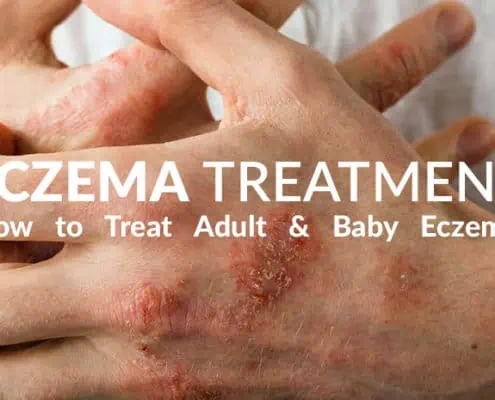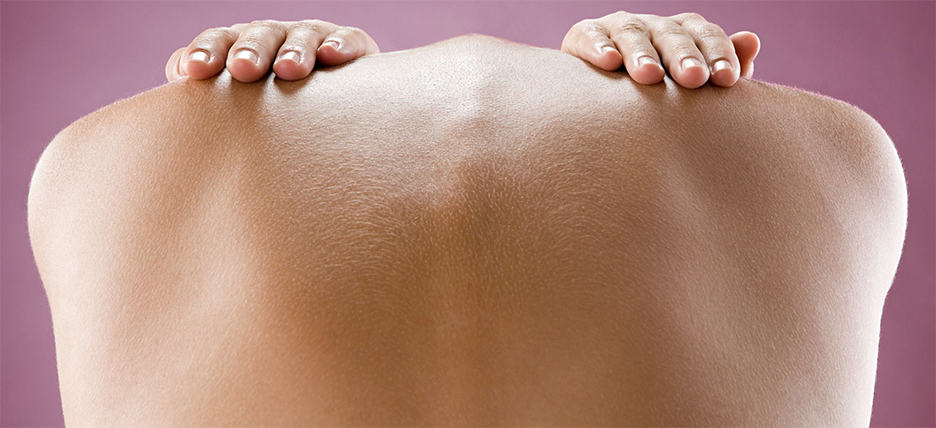
OC 949-428-4500
LA 310-460-2444

Before you consider what you can do to make your skin healthier and more beautiful, it is imperative that you understand the physiological nature of your skin. Hopefully, with deeper insight into the functions of the skin, you will be able to better care for it, and make better decisions regarding treatments and procedures that you might be contemplating.
For the first three to four decades of the average person’s life, we don’t think that much about our skin, let alone how our skin functions, unless our skin presents us with something that doesn’t look good, like cystic acne or cystic acne scars.
However, right around our 40th year, things start showing up that remind us that eventually our bodies are going to fall apart…. You know… “dust to dust”. It’s just that we didn’t expect to see those things on us… only on other people. Then, lo and behold, wrinkles, sagging, sunspots, age spots, rosacea, spider veins, broken capillaries, bags under our eyes, and even the curse of stretch marks.
Suddenly we start thinking about facelifts, laser peels, non-surgical facelifts, hyperpigmentation treatments and on and on. We even start hearing stories about people we know our age who got skin cancer.
Bottom line, we need to understand our skin if we intend to take care of it
Your skin is an organ. In fact, it is the single largest organ you have by size and weight. Although you might think of your skin as having only one basic function, that of separating the inside of you from the outside world, your skin actually serves many vital physiological functions:
The first function of the skin is that it acts as a barrier that defines where your physiological self ends, and where the outside world begins. In that context, your skin serves a vital function as part of your IMMUNE system. It is adapted with all sorts of specialized immunological tools that serve to protect your physiology from pathogens (such as bacteria) that lurk in the outside world.
If such a pathogen manages to land on your skin, your skin will keep it from getting in. If the pathogen manages to penetrate into your skin, your skin will launch a barrage of counter measures to kill it.
Thus, your skin serves as the FIRST LINE OF DEFENSE OF YOUR IMMUNE SYSTEM.
The second function of the skin is that it is a vital part of your NERVUS SYSTEM. Consider this fact: Your skin has more nerve endings in it than any other organ. “Why?” you might ask. What do all those nerves do?
Let’s list the neurological functions of the skin:
Bottom line: You skin is the primary way you know that you exist in the physical world.
The third function of the skin is thermal regulation. Your skin is essential in keeping your insides at the precisely calibrated temperature required by the rest of your vital organs to function properly.
If you get too hot, your skin will sweat, which causes a dramatic reduction of internal heat when the sweat evaporates. (“Evaporative cooling”)
If you get too hot, the blood vessels in your skin will dilate, causing more blood flow to the skin, which allows more heat to be released from your body through “radiant cooling”. That’s right, by controlling the amount of blood flowing through your skin; your skin is acting just like a radiator in your car.
If you get too hot, your “Arrector Pili” muscles that control your hair “standing up”, will allow more air to circulate close to the skin in order to cool it down.
When you are too cold, the exact opposite list of things happen.
For instance, when you are too cold, the blood vessels in your skin contract, reducing the flow of warm blood from your interior, thereby keeping your warmth inside which protects your vital organs.
Remember that time when you were caught unprepared while camping and you got really cold? Well, you might have resorted to what they used to do in old western movies, and started sipping from a bottle of whisky until you felt warm all over. Very Bad Idea!
The reason you felt warm all over is because the alcohol overrode your skin’s natural physiological response to being cold, and instead of constricting its blood vessels it forced the blood vessels in your skin to do the exact opposite and dilate, which allowed warm blood from your interior to flow to your skin and make it feel warm.
But the price of making your skin feel warm is that you were losing precious core heat that was protecting your vital internal organs… which only brings you closer to dangerous and potentially fatal hypothermia.
This is a perfect example of how treating a symptom and not the underlying cause of a problem can lead to disaster.
The moral of the story is: Your physiology is smarter than you are. Ninety nine times out of a hundred, when you override your physiology you are taking more risks than you know… than anyone knows!
Even when under supervised medical care, prescribed medications that treat a specific illness involve a significant risk to many aspects of your physiology. In the US alone, around 80,000 deaths each year (and climbing) are caused inadvertently by improper dosing or unanticipated reactions to and interactions of prescribed pharmaceutical medications.
The fourth function of the skin is control of evaporation / retention of water. Your body is approximately 70% water. Down to the level of every single cell in your body, the biochemical processes that are taking place every second are dependent on the presence of water.
Therefore, your body has many sophisticated physiological mechanisms for controlling and calibrating the precise amount of water it contains. Too much or too little water can kill you. One of these mechanisms is your skin which is engineered as the perfect moisture barrier that keeps your water inside.
One of the most difficult elements of keeping a burn patient alive is the inability to control proper hydration levels, due to excessive dehydration because of skin loss.
The fifth function of of the skin is synthesis. Like many other organs, your skin is also a place where important biochemical components essential for health are synthesized. The best example of this is Vitamin D.
The sixth function of the skin is storage. Your skin functions as a storage warehouse for important lipids (essential fats) and water.
Of course the fat under the skin also functions as an insulation layer… though truthfully, most of us would prefer to use a sweater.
The skin itself and the fat layer under the skin also serve as an enormous storage facility for absorbing toxins, including pharmaceutical medications, illicit drugs and environmental toxins. That is why when we successfully detox, we can see such a huge difference in the color and “brightness” of our skin.
The seventh function of the skin is excretion. In addition to cooling you down, your sweat contains urea, which is the key chemical compound used by your physiology to control and regulate nitrogen.
Nitrogen is a critical element found in amino acids and proteins. Like all chemical elements found in your body, if your physiology loses its ability to regulate and control the presence of nitrogen, you will become sick to the point of death.
Simply stated, your sweat glands are part of your natural detoxification system. If you eat a lot of garlic for dinner tonight, you will likely smell it in your sweat tomorrow.
The eighth function of the skin is absorption. Mainly your skin serves as a barrier to absorbing elements that it inadvertently comes in contact with.
However, for centuries humans have devised topical formulations that can be absorbed through the skin. Today, some medications are preferentially administered in this way, called “transdermal” absorption.
The ninth function of the skin is sun protection. The skin contains cells called Melanocytes, whose job it is to produce melanin. Melanin is the natural pigment in our skin that absorbs sun light. Thus, depending on your ethnic heritage, your melanocytes will be programed to produce the needed amount of melanin to protect you from the typical amount of sun exposure associated with your heritage. Thus a person who originates from sub Saharan Africa (black skin such as Sudan) will have melanocytes that are much more active than a person who originates from Scandinavia (pale skin).
Accordingly, when your skin is exposed to the sun, your melanocytes are stimulated to produce extra melanin, otherwise known as a “tan”, your body’s natural sunblock.
Simply put, the darker your base line skin color is, the better it is protected from the sun. The reason this is critically important is because sun damaged skin can develop skin cancer. In fact 90% of all skin cancers are considered to be caused by excessive sun exposure.
The single most important thing you can do to take care of your skin, is protect it from the sun. If possible, keep your skin in the shade. If exposure is inevitable, use a good broad-spectrum sunblock with a minimum of 40 SPF.
These same melanocytes, when they have been exposed to excessive sun, can lose their ability to regulate the amount of melanin they are making, thus creating sun spots and age spots, otherwise generally known as hyperpigmentation.
The tenth function of the skin is communication. Believe it or not, most communication between humans is NOT verbal… rather it is the emotional cues we exchange via our tone, facial expressions, body posture, as well as cues sent by our skin, such as blushing or blanching.
For some, more subtle communication can be received through the “energy” someone might project. Have you ever received a hug from someone in an angry, stressed or sad mood? The experience is very different than being touched by someone in a good and happy mood.
The existences of such subtle energies have been scientifically validated by scientific luminaries such as Dr. Gary Schwartz, who authored the book: The Living Energy Universe. The “healing” energies that flow from the hands of healers who specialize in healing with touch, are especially strong, and have been measure in a variety of ways as well as captured on film.
The eleventh function of the skin is healing and higher consciousness. Acupuncture, which is the healing science of manipulating “meridian energies” that flow through our skin, has been studied and practiced for centuries.
Though the effectiveness of acupuncture is well supported by an enormous amount of accumulated clinical evidence, the existence of meridian energies was questioned in the west until recent years. Fortunately, through the research of scientists such as Dr. Gary Schwartz, these energies have been scientifically validated.
Beyond the benefits to our physical health, the reason it is so important to recognize the existence and validity of these subtle meridian energies, is because they give us direct access into the experience that our bodies are more than just a mass of molecules engaged in a metabolic biochemical dance.
Our bodies are also a network of finely tuned energies that interact with our consciousness. Some people explain that these energies are the bridge between our physical and spiritual natures.
Doctors Alice Pien, MD and Asher Milgrom, Phd are established pioneers in the fields of Regenerative Medicine and Skincare. Their expertise ranges from advanced laser systems to HCT/P – Stem Cell medicine. Their medical education and advanced certifications span from medical schools of NY State University, the University of Chicago, to Johns Hopkins, Harvard and UCLA. They approach medicine with the clinical expertise of over 85,000 successful treatments over the past 20 years and significant scientific research resulting in proprietary protocols that they customize for each individual patient.
AMA Regenerative Medicine & Skincare | 1570 Brookhollow Dr., Santa Ana, CA 92705 | 6310 San Vicente Blvd STE 285, Los Angeles, CA, 90048 | Privacy Policy